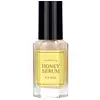What's inside
What's inside
 Key Ingredients
Key Ingredients

 Benefits
Benefits

 Concerns
Concerns

 Ingredients Side-by-side
Ingredients Side-by-side

Water
Skin ConditioningGlycerin
HumectantButylene Glycol
HumectantPsidium Guajava Leaf Extract
Astringent1,2-Hexanediol
Skin ConditioningCamellia Sinensis Leaf Extract
AntimicrobialBrassica Oleracea Italica Extract
AstringentLentinus Edodes Extract
Skin ConditioningEriobotrya Japonica Leaf Extract
Skin ConditioningPolyglyceryl-10 Laurate
Skin ConditioningPolyglyceryl-4 Laurate
EmulsifyingCarbomer
Emulsion StabilisingCaprylyl Glycol
EmollientEthylhexylglycerin
Skin ConditioningStyrene/Acrylates Copolymer
Octyldodeceth-16
EmulsifyingSasa Quelpaertensis Extract
Skin ConditioningArginine
MaskingAcorus Gramineus Extract
HumectantSodium Hyaluronate
HumectantPvp
Emulsion StabilisingGlyceryl Acrylate/Acrylic Acid Copolymer
HumectantAdenosine
Skin ConditioningEclipta Prostrata Extract
Skin ConditioningFullerenes
AntimicrobialPelargonium Graveolens Flower Oil
MaskingCitronellol
PerfumingGeraniol
PerfumingWater, Glycerin, Butylene Glycol, Psidium Guajava Leaf Extract, 1,2-Hexanediol, Camellia Sinensis Leaf Extract, Brassica Oleracea Italica Extract, Lentinus Edodes Extract, Eriobotrya Japonica Leaf Extract, Polyglyceryl-10 Laurate, Polyglyceryl-4 Laurate, Carbomer, Caprylyl Glycol, Ethylhexylglycerin, Styrene/Acrylates Copolymer, Octyldodeceth-16, Sasa Quelpaertensis Extract, Arginine, Acorus Gramineus Extract, Sodium Hyaluronate, Pvp, Glyceryl Acrylate/Acrylic Acid Copolymer, Adenosine, Eclipta Prostrata Extract, Fullerenes, Pelargonium Graveolens Flower Oil, Citronellol, Geraniol
Glycerin
HumectantWater
Skin ConditioningDimethicone
EmollientButylene Glycol
HumectantCyclopentasiloxane
EmollientNiacinamide
SmoothingPEG/PPG-18/18 Dimethicone
EmulsifyingUndecane
EmollientCyclohexasiloxane
EmollientTridecane
Perfuming1,2-Hexanediol
Skin ConditioningSodium Chloride
MaskingDimethicone/Vinyl Dimethicone Crosspolymer
Skin ConditioningPEG-10 Dimethicone
Skin ConditioningDisteardimonium Hectorite
StabilisingBoswellia Serrata Resin Extract
SmoothingHoney Extract
HumectantAdenosine
Skin ConditioningCinnamomum Cassia Bark Extract
MaskingCurcuma Longa Root Extract
MaskingLevan
Skin ProtectingDecyl Glucoside
CleansingOlea Europaea Leaf Extract
PerfumingEthylhexylglycerin
Skin ConditioningDisodium EDTA
Pollen Extract
EmollientPhenethyl Alcohol
MaskingZiziphus Jujuba Seed Extract
Skin ConditioningCentella Asiatica Extract
CleansingRoyal Jelly Extract
Skin ConditioningPropolis Extract
Skin ConditioningBee Venom
AstringentCitric Acid
BufferingAscorbic Acid
AntioxidantMadecassoside
AntioxidantParfum
MaskingButylphenyl Methylpropional
PerfumingGeraniol
PerfumingLimonene
PerfumingCitral
PerfumingGlycerin, Water, Dimethicone, Butylene Glycol, Cyclopentasiloxane, Niacinamide, PEG/PPG-18/18 Dimethicone, Undecane, Cyclohexasiloxane, Tridecane, 1,2-Hexanediol, Sodium Chloride, Dimethicone/Vinyl Dimethicone Crosspolymer, PEG-10 Dimethicone, Disteardimonium Hectorite, Boswellia Serrata Resin Extract, Honey Extract, Adenosine, Cinnamomum Cassia Bark Extract, Curcuma Longa Root Extract, Levan, Decyl Glucoside, Olea Europaea Leaf Extract, Ethylhexylglycerin, Disodium EDTA, Pollen Extract, Phenethyl Alcohol, Ziziphus Jujuba Seed Extract, Centella Asiatica Extract, Royal Jelly Extract, Propolis Extract, Bee Venom, Citric Acid, Ascorbic Acid, Madecassoside, Parfum, Butylphenyl Methylpropional, Geraniol, Limonene, Citral
Ingredients Explained
These ingredients are found in both products.
Ingredients higher up in an ingredient list are typically present in a larger amount.
1,2-Hexanediol is a synthetic liquid and another multi-functional powerhouse.
It is a:
- Humectant, drawing moisture into the skin
- Emollient, helping to soften skin
- Solvent, dispersing and stabilizing formulas
- Preservative booster, enhancing the antimicrobial activity of other preservatives
Adenosine is in every living organism. It is one of four components in nucleic acids that helps store our DNA.
Adenosine has many benefits when used. These benefits include hydrating the skin, smoothing skin, and reducing wrinkles. Once applied, adenosine increases collagen production. It also helps with improving firmness and tissue repair.
Studies have found adenosine may also help with wound healing.
In skincare products, Adenosine is usually derived from yeast.
Learn more about AdenosineButylene Glycol (or BG) is used within cosmetic products for a few different reasons:
Overall, Butylene Glycol is a safe and well-rounded ingredient that works well with other ingredients.
Though this ingredient works well with most skin types, some people with sensitive skin may experience a reaction such as allergic rashes, closed comedones, or itchiness.
Learn more about Butylene GlycolEthylhexylglycerin (we can't pronounce this either) is commonly used as a preservative and skin softener. It is derived from glyceryl.
You might see Ethylhexylglycerin often paired with other preservatives such as phenoxyethanol. Ethylhexylglycerin has been found to increase the effectiveness of these other preservatives.
Geraniol is used to add fragrance/parfum to a product. It is the main component of citronellol. It is a monoterpenoid and an alcohol.
Monoterpenes are naturally found in many parts of different plants.
Geraniol can be found in many essential oils including Rose Oil and Citronella Oil. The scent of Geraniol is often described as "rose-like". Many foods also contain Geraniol for fruit flavoring.
Geraniol can irritate the skin when exposed to air. However, irritation depends on the ability of geraniol to penetrate into the skin. In general, geraniol is not able to penetrate skin easily.
Geraniol is colorless and has low water-solubility. However, it is soluble in common organic solvents.
Like citronellol, it is a natural insect repellent.
2,6-Octadien-1-ol, 3,7-dimethyl-, (2E)-
Learn more about GeraniolGlycerin is already naturally found in your skin. It helps moisturize and protect your skin.
A study from 2016 found glycerin to be more effective as a humectant than AHAs and hyaluronic acid.
As a humectant, it helps the skin stay hydrated by pulling moisture to your skin. The low molecular weight of glycerin allows it to pull moisture into the deeper layers of your skin.
Hydrated skin improves your skin barrier; Your skin barrier helps protect against irritants and bacteria.
Glycerin has also been found to have antimicrobial and antiviral properties. Due to these properties, glycerin is often used in wound and burn treatments.
In cosmetics, glycerin is usually derived from plants such as soybean or palm. However, it can also be sourced from animals, such as tallow or animal fat.
This ingredient is organic, colorless, odorless, and non-toxic.
Glycerin is the name for this ingredient in American English. British English uses Glycerol/Glycerine.
Learn more about GlycerinWater. It's the most common cosmetic ingredient of all. You'll usually see it at the top of ingredient lists, meaning that it makes up the largest part of the product.
So why is it so popular? Water most often acts as a solvent - this means that it helps dissolve other ingredients into the formulation.
You'll also recognize water as that liquid we all need to stay alive. If you see this, drink a glass of water. Stay hydrated!
Learn more about Water